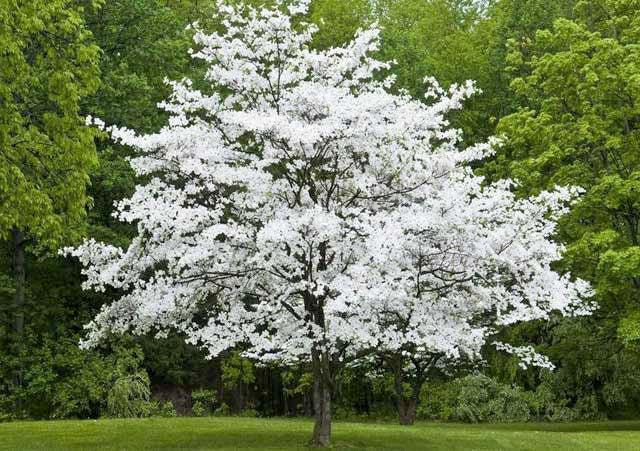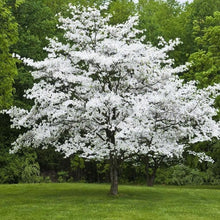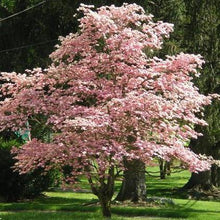When Do Dogwood Trees Bloom
Dogwood tree bloom time varies depending on your climate, the weather in a particular year, and the type of Dogwood. Cornus florida (native dogwood) blooms in early spring before the leaves emerge in March, April, or May. This differs from Cornus kousa which flowers in spring, shortly after the tree comes out of dormancy. You will see blooms on your Kousa Dogwood in April, May, or June with warmer climates at the earlier end of the spectrum and cooler toward the end.
How Fast Do Dogwood Trees Grow?
The growth rate of Dogwoods differs slightly between the varieties, but in general these ornamental trees tend to grow at a moderate rate. Under ideal conditions they can grow 1 to 2 feet per year. Kousa Dogwoods tend to grow at a slightly slower rate than native flowering Dogwoods.
When To Plant Dogwood Trees
For most areas of the US, early fall and spring are the best times to plant Dogwoods. Summer planting can be successful in areas with mild summers. The same applies to winter planting in areas with mild winters. If you live in a tropical growing zone, avoid planting in late spring or summer when temperatures are high for best results. When planting trees in summer be sure to provide plenty of water to combat heat stress. A layer of mulch will help the ground hold moisture better and protect the roots.
How Are Dogwood Trees Used In The Landscape?
Striking for lining driveways, staggered throughout your property, or as a single specimen, Dogwood trees are versatile in the landscape. These trees are drought tolerant and adaptable and can grow in sun or shade so you have a lot of options. Dogwoods tend to grow taller in shade than in sun but are usually fuller in more sun. If you want an attractive plant bed, plant a Dogwood Tree on the corner of the bed and then fill in the area with junipers and azaleas. These colorful plant selections will make your dogwood tree stand out.
How To Care For Dogwood Trees
For most areas of the US, early fall and spring are the best times to plant Dogwoods. Summer planting can be successful in areas with mild summers. The same applies to winter planting in areas with mild winters. If you live in a tropical growing zone, avoid planting in late spring or summer when temperatures are high for best results. When planting trees in summer be sure to provide plenty of water to combat heat stress. A layer of mulch will help the ground hold moisture better and protect the roots.
Where To Buy Dogwood Trees
Buy Dogwood Trees for sale online and we will ship them right to your doorstep! PlantingTree is a family owned and operated online garden center that ships throughout the continental United States from our North Carolina nursery. We take pride in every order. We want our customers to be happy with our ordering process, our customer service, and our high quality plants. We carry branched and established Dogwoods up to 6 feet tall. Scroll up to view our current inventory.
Dogwood Tree Varieties

The blooms of the Pink Dogwood start off light and darken into an alluring rose pink you are sure to love. This pretty tree welcomes fall with leaves that transition into a beautiful, bright red. In winter this Dogwood’s small red fruits are an excellent source of food for a variety of birds.

The snow white blossoms of the White Dogwood Tree are one of the very first signs of spring. These creamy flowers are just one of the stunning features of the White Dogwood Tree. In fall its green leaves turn in a lively burgundy red. That beautiful show is followed up by red berry-like fruit that is enjoyed by wildlife.

The Red Dogwood Tree is in huge demand. The deep rose red pink flowers announce spring with vigor. A short time later new leaves emerge a shimmering red. As the foliage matures it turns green. But in autumn the vibrant red leaves are back! Red fruit is formed in fall and lasts throughout winter. Enjoy red red red with the Red Dogwood!

The hardy White Kousa Dogwood is pest, deer, and disease resistant. Songbirds love the distinctive berries. The fall display is gorgeous with red leaves that have hints of purple. This non-invasive tree can grow in just about any yard. Plant in full sun or part shade. Learn more about the Kousa Dogwood.










